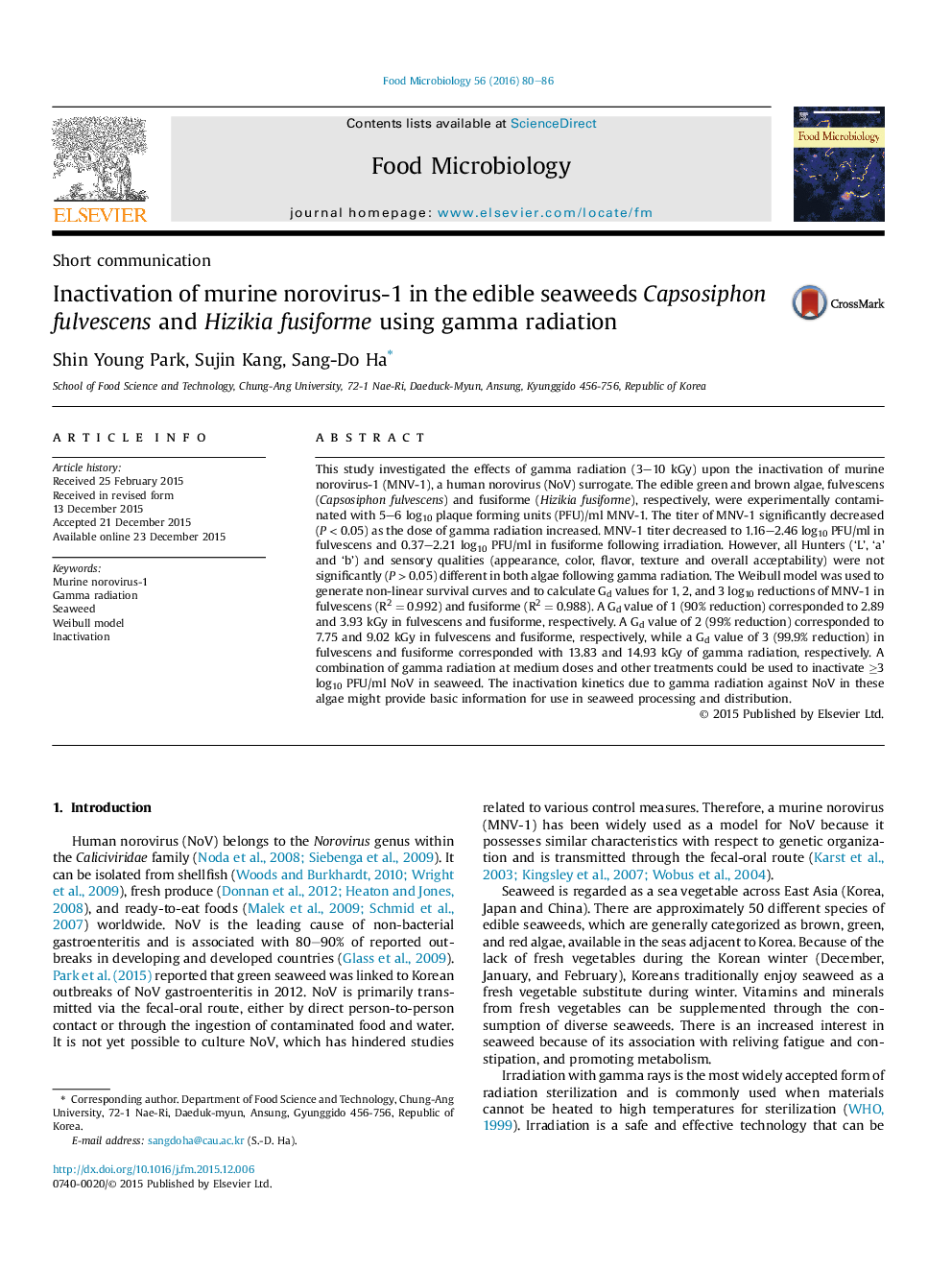| Article ID | Journal | Published Year | Pages | File Type |
|---|---|---|---|---|
| 4362655 | Food Microbiology | 2016 | 7 Pages |
•Gamma irradiation was investigated for inactivation of MNV-1, in two species of edible algae.•MNV-1 decreased to 1.16–2.46 log in Capsosiphon fulvescens and 0.37–2.21 log in Hizikia fusiforme by 3–10 kGy.•No significant differences in color or sensory qualities were observed in either alga by 3–10 kGy.•Weibull model Gd value of 1 corresponded to 2.89 kGy in C. fulvescens and 3.93 kGy in H. fusiforme.
This study investigated the effects of gamma radiation (3–10 kGy) upon the inactivation of murine norovirus-1 (MNV-1), a human norovirus (NoV) surrogate. The edible green and brown algae, fulvescens (Capsosiphon fulvescens) and fusiforme (Hizikia fusiforme), respectively, were experimentally contaminated with 5–6 log10 plaque forming units (PFU)/ml MNV-1. The titer of MNV-1 significantly decreased (P < 0.05) as the dose of gamma radiation increased. MNV-1 titer decreased to 1.16–2.46 log10 PFU/ml in fulvescens and 0.37–2.21 log10 PFU/ml in fusiforme following irradiation. However, all Hunters (‘L’, ‘a’ and ‘b’) and sensory qualities (appearance, color, flavor, texture and overall acceptability) were not significantly (P > 0.05) different in both algae following gamma radiation. The Weibull model was used to generate non-linear survival curves and to calculate Gd values for 1, 2, and 3 log10 reductions of MNV-1 in fulvescens (R2 = 0.992) and fusiforme (R2 = 0.988). A Gd value of 1 (90% reduction) corresponded to 2.89 and 3.93 kGy in fulvescens and fusiforme, respectively. A Gd value of 2 (99% reduction) corresponded to 7.75 and 9.02 kGy in fulvescens and fusiforme, respectively, while a Gd value of 3 (99.9% reduction) in fulvescens and fusiforme corresponded with 13.83 and 14.93 kGy of gamma radiation, respectively. A combination of gamma radiation at medium doses and other treatments could be used to inactivate ≥3 log10 PFU/ml NoV in seaweed. The inactivation kinetics due to gamma radiation against NoV in these algae might provide basic information for use in seaweed processing and distribution.
